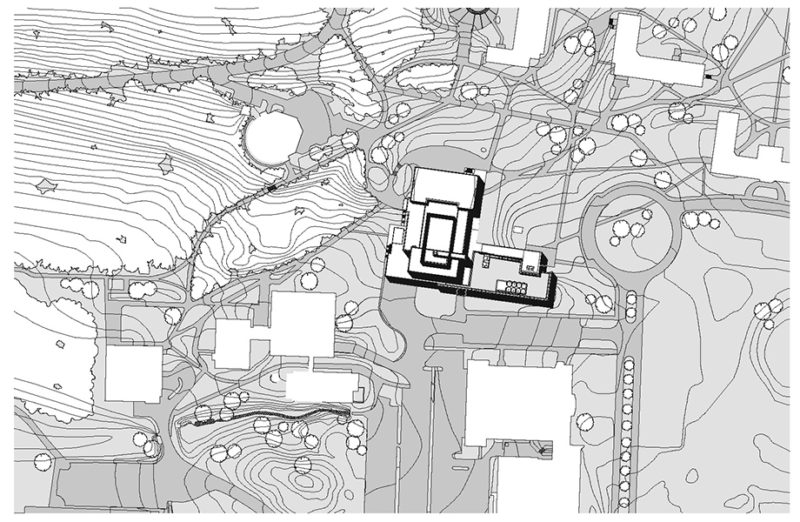Kambri is an island, a detachment that floats separate to the rest of campus. This “cultural precinct” and “community space” features a flashy bookstore, cafés, student services, and open-plan study spaces. Students at the Australian National University are meant to gain, “a new educational, physical, creative and social experience in a village setting.” However, the university’s rosy-hued promise is unlikely to surface into reality.
This gleaming boulevard has already been duly noted as a contribution to ANU’s “process of gentrification.”[1] Yet Kambri is also symptomatic of the broader, and more dangerous, trend of corporatisation, as the university succumbs to the pursuit of profits.
As a core component of the university community, clubs and societies rely on the use of the university “commons.” And while there is a “Student Commons” at the centre of Kambri, the system of facility hire reserves the best facilities for the use of those who can afford to foot the bill, leaving only small patches on the map for students. There is really no excuse at this point for pricing students out of their own spaces.
Universities are so much more than places of study and club events. If I drew my own map of ANU, it would feature more coffeeshops than classrooms. I know the best place to take a nap between class and where to spot kangaroos after dark. I would draw a line for where to go running to sweat out stress. As for many other students, my university has served as a place of learning but also as a home. The health of the university community depends on the space it provides for education, residence and recreation. These are interdependent features of the physical university. ANU seems to have conveniently forgotten about this fundamental relationship.
Macquarie University suffers from a similar amnesia. Its MAZE space met with criticism from clubs soon after it was opened at the beginning of 2018.[2] The dispute also seems to be wrapped up with funding problems for student groups.[3] While the university goes out of its way to attract external traffic, students no longer feel at home on their own campus. The effect is one of disorientation where the boundaries between the university and the nearby shopping centre become blurred.
Up the road from ANU, the University of Canberra is undergoing a different style of corporatisation. Christoph Zierholz is suing the University of Canberra and University of Canberra Union for $1.6 million in losses as a result of the university establishing The Well as a direct on-campus competitor.[4] During a conversation I had with a UC student he observed that, “The university starts by leasing out all the hospitality businesses on campus but then after a few years they prefer to internalise and control everything. And this becomes a business cycle for the university.” But it is not as if anyone has asked the student body for their opinion who are treated as consumers to be bartered over while the cartographic branding of the campus changes on a whim.
ANU is also no stranger to sidelining small businesses in the pursuit of profits. The sheer rent costs for Kambri have priced out vendors who have been long-term operators at the university.[5] Walking through the new precinct feels like window shopping. There is nothing homely about the expensive cafés or the plant-deprived pathways. Kambri is just a white empty space on my map.
Unfortunately, none of this is surprising. The privileging of profits over student experience is not restricted to the physical campus. The corporatisation of universities across Australia is a trend seen in the content of degrees and the casualisation of its workforce. University spaces are merely another casualty. And whatever personal relationship I had with my university campus is now severed. I propose that it is time that we re-draw the map.
Bibliography
[1] Vanamali Hermans, “Our campus has been gentrified,” Woroni, March 26, 2019, https://www.woroni.com.au/words/our-campus-has-been-gentrified/
[2] Angus Dalton, “Macquarie Uni student groups slam new room hiring fees,” Grapeshot, March 22, 2018, https://grapeshotmq.com.au/2018/03/mq-uni-student-groups-slam-new-room-hiring-fee/
[3] Katelyn Free, “All the drama you’ve missed,” Grapeshot, February 24, 2019, https://grapeshotmq.com.au/2019/02/news-drama-you-missed/?fbclid=IwAR3VPH_wrN1K3ygyZqYv4ssKVVGM-q3q9pcUNxYigK9JmbUFmSuSd2MUMX4
[4] Daniella White, “Stoush over rival bars at the University of Canberra goes to trial,” The Canberra Times, February 25, 2019, https://www.canberratimes.com.au/national/act/stoush-over-rival-bars-at-the-university-of-canberra-goes-to-trial-20190225-p5103w.html
[5] Jessica Whiting, “‘Not financially stable’: pop-up vendors to close due to Kambri costs, The ANU Observer, January 24, 2019, https://anuobserver.org/2019/01/24/not-financially-sustainable-pop-up-vendors-to-close-due-to-kambri-costs/

